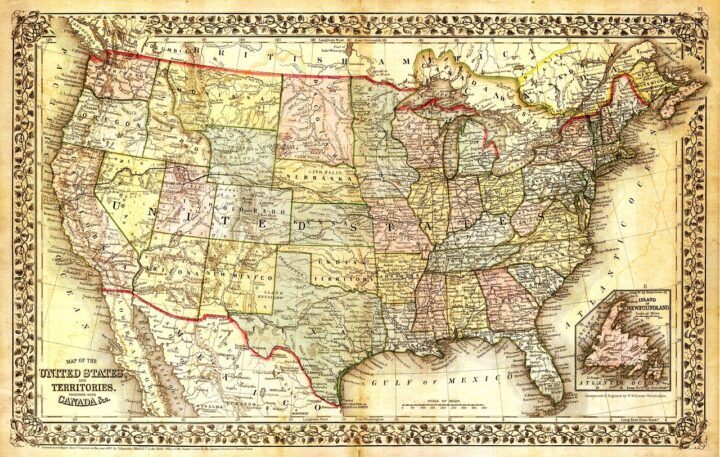Table of Contents
Locations of Tiny House Communities: Cozy Spots You’ll Love
Imagine waking up to the sounds of nature, in a community that values sustainable living and minimalism. Locations of tiny house communities are popping up across the United States, offering unique opportunities for those who embrace the Tiny House Movement. These communities provide a blend of affordability, eco-friendly living, and often stunning locations.

You might find yourself intrigued by places like Escalante Village in Durango, Colorado, nestled among the La Plata Mountains, or Cedar Springs Tiny Village in New Paris, Ohio, where you can enjoy serene lake views. Whether you’re looking for a temporary retreat or a permanent home, these communities are designed to foster connection and simplicity.
Living in a tiny house community isn’t just about downsizing your living space; it’s about upscaling your life quality and community well-being. With plenty of options available, from LuxTiny Community in Arizona to lesser-known gems, there’s a perfect tiny home spot waiting just for you.
Key Takeaways
- Explore diverse tiny house communities with unique locations.
- Tiny house communities foster affordable and eco-friendly living.
- These communities offer a blend of simplicity and strong community ties.
- The Sanctuary is a community designated an adult-only community, where indoor cats are the only pets permitted.
Understanding Tiny House Communities
Tiny house communities offer a mix of affordability, minimalism, and a close-knit atmosphere. These communities bring unique lifestyle benefits, often with shared amenities and a focus on sustainable living.
Defining Tiny House and Community Elements
A tiny house is a small, efficient home, typically under 400 square feet. These homes prioritize functionality and minimalism. In a tiny house community, residents share resources and amenities, like a community garden or a dog park.
These communities foster tiny living, promoting sustainability and reduced environmental footprints. Residents often form tight bonds, creating a supportive and engaged environment.
Comparing Tiny House Communities and RV Parks
Tiny house communities and RV parks might seem similar because they both offer homes on wheels. However, tiny house communities are more permanent gated communities and focus on building a sense of community.
RV parks, on the other hand, are often temporary stops for travelers. They might not offer the same communal amenities like shared gardens or social events. Tiny house communities usually emphasize sustainable practices and collective living, while RV parks prioritize convenience for short stays.
The Appeal of Minimalist Living in Tiny Homes
Minimalist living in a tiny house helps you reduce clutter and focus on what truly matters. Tiny homes offer a simpler lifestyle, with fewer possessions and more emphasis on experiences.
Living in such a close-knit community helps you connect deeply with neighbors. Shared spaces like community gardens, community pools or dog parks can enhance your quality of life. This lifestyle appeals to those seeking a smaller environmental footprint and more intentional living.
The Legal Landscape
When thinking about where you can set up your tiny house, it’s important to look at zoning laws and building codes. These influence where your tiny house can be placed and how it must be built.
Navigating Zoning Laws and Regulations
Zoning laws can be like a maze when trying to find a spot for your tiny house. Rules vary widely by state, city, and even by neighborhood. For example, California, Texas, and Oregon are more welcoming to tiny houses, offering more options for living. But in some places, these homes might be seen as RVs, which means you’ll need to park them in specific lots or RV parks.
Urban living options for tiny houses can be limited by zoning regulations. In some areas, tiny houses on foundations are classified as Accessory Dwelling Units (ADUs). For that, you need to follow local zoning laws, which determine suitable places for these structures. Checking local regulations is crucial, so look up details on sites like Tiny House to make sure you’re compliant.
Understanding Building Codes and RVIA Certification
Building codes also affect where and how you can set up your tiny house. These codes ensure safety and livability, but they can be strict. For example, if your tiny house is on a foundation, you need to meet the building codes of that area. This usually involves minimum size requirements, insulation standards, and other structural rules.
On the other hand, if your tiny house is on wheels, it might fall under RV regulations. This is where RVIA (Recreational Vehicle Industry Association) certification can come in handy. An RVIA-certified tiny home follows standards that make it safer and possibly easier to insure and park at RV sites. RVIA certification can be a good step for those looking at mobile tiny houses.
Checking sites like Zillow for land can be helpful. These sites can provide the details on lots for sale and recent sale prices, making your search for legal spots easier.
Finding Tiny House Communities
Looking to find a tiny house community? There are many ways to discover these unique neighborhoods, from using online tools like maps to reaching out through community networks.
Utilizing Online Resources and Maps
Using online resources is one of the easiest ways to locate tiny house communities. Websites like Tiny House Map allow you to see various tiny home options, including builders and homes for rent or sale. This interactive tool can also point you to social events and workshops.
For example, you can find communities like Cedar Springs Tiny Village in New Paris, Ohio. This village offers beautiful lake views and is located near Columbus and Cincinnati. Another option is the Orlando Lakefront community, close to downtown Orlando and filled with modern amenities.
Different websites list various communities, so exploring several can provide a broader view. Check out platforms offering searchable maps and directories of communities, like Tiny Living Life and Tiny House Net, for even more options.
Word-of-Mouth and Community Networking
Sometimes the best way to find a tiny house community is through word-of-mouth. Talking to friends, attending events, or joining social media groups can offer valuable insights.
Networking with tiny home builders, like Tiny Homes Detroit, can also be helpful. Builders often know several communities where their homes are established.
Local meetups and community events aimed at tiny home enthusiasts are great places to start conversations. Communities like LuxTiny in Arizona, known for their sustainability efforts, may frequently host local events that you can attend. By engaging with people who share your tiny home interests, you can discover firsthand information about various communities.
In short, blending online research with personal interactions will give you the best chance at finding a tiny house community that suits your needs.
Regional Focus on Tiny House Communities

Tiny house communities are popping up across the United States, each region offering a unique take on simple living. From the coasts of Florida to the heights of Colorado, there’s a tiny home community to fit every lifestyle and preference.
The Tiny House Scene in Colorado and California
In Colorado, the town of Lyons hosts WeeCasa, one of the largest tiny house hotels. It’s a cozy spot with mountain views and access to outdoor activities.
In California, you can find tiny house communities near major hubs like San Francisco. These communities often focus on sustainability and a minimalist lifestyle, attractive to those seeking a simpler way to live near bustling cities.
Florida and South Carolina: A Look at Coastal Tiny Living
In Florida, tiny house communities are making waves. Places like Orlando offer residents a mix of urban amenities and coastal benefits.
In South Carolina, Greenville’s The Village at Flat Rock stands out to outdoor enthusiasts with its scenic views and close-knit vibe. It’s ideal for nature lovers looking for eco-friendly living in the foothills of the Blue Ridge Mountains.
Exploring Tiny Communities in the Midwest
The Midwest offers unique options for tiny house living. In Ohio, communities like Cedar Springs Tiny Village provide a picturesque setting and strong community bonds.
In Columbus, Ohio, tiny house villages are becoming more common, providing urban convenience with tiny living. These Midwestern communities are great for those looking to embrace tiny home life while enjoying the simple, quiet charm of the region.
Community Amenities and Features
Tiny house communities offer a variety of amenities that enhance living experiences. These include Community spaces, green areas, and facilities for daily needs.
Common Areas and Shared Facilities
Many tiny house communities include common areas where residents can gather and socialize. These spaces might feature picnic tables, fire pits, or BBQ grills.
Shared facilities are another big draw. These often include laundry facilities and communal kitchens. Having access to laundry on the premises is convenient and saves trips to laundromats.
Another highlight is the tiny house resort setup, which offers amenities like clubhouses or event spaces. These areas are perfect for hosting events or meeting neighbors. Some resorts even include pools or saunas, adding to the luxury of tiny house living.
The Role of Green Spaces and Nature Trails
Green spaces play a crucial role in tiny house communities. These areas provide places for relaxation and recreation. A well-maintained community garden can offer fresh produce and a chance to engage in gardening.
Nature trails are often found close to these communities. They are perfect for those who enjoy hiking, biking, or simply taking a peaceful walk. Trails can add a sense of adventure and connection to the environment.
Living near nature can reduce stress and improve well-being. Plus, it encourages a more active lifestyle, which is healthier for everyone.
Fitness, Laundry, and Everyday Convenience
Fitness facilities are an essential amenity. Many communities offer a fitness center with equipment for your daily workout. This eliminates the need for a gym membership and makes it easier to stay active.
Laundry facilities are another must-have. On-site washers and dryers save time and make life more convenient. No more lugging laundry to a laundromat or waiting for machines.
Everyday conveniences can also include small shops or cafes within the community. These places can be a great spot to grab a coffee or pick up last-minute groceries, making day-to-day living easier.
By combining these amenities, tiny house communities create a comfortable and functional living environment that appeals to many.
The Economics of Tiny House Living
Living in a tiny house can save you money in many ways. From lower monthly costs to fewer maintenance expenses, you’ll find that embracing simplicity has financial benefits.
Comparing Costs: Rent vs. Mortgage Payments
Tiny houses can be owned outright for much less than the cost of a traditional home. Many tiny homeowners pay around $23,000 if they build it themselves, but hiring a builder doubles the cost. If you decide to live in a tiny house community, expect to pay rent. For example, Cedar Springs Tiny Village charges $441 per month for lakefront sites with a lease of 13 months or more. These are significantly lower than average mortgage payments, providing a way to achieve housing stability without long-term debt.
Utility Expenses and Maintenance in a Tiny House Community
Living in a tiny house means drastically reduced utility bills. Heating and cooling a smaller space takes less energy, which translates to lower bills. In places like Cedar Springs Tiny Village, essential utilities like water, sewer, and trash are often included in your monthly rent. Repair costs are also minimized because there’s less house to maintain. This creates additional savings, making tiny house living not only affordable but also lower in unexpected costs.
The Financial Freedom of Downsizing
Downsizing to a tiny house can provide significant financial freedom. A smaller living space means fewer belongings and less spending on furniture and decor. In fact, 68% of tiny house owners are mortgage-free compared to only 29.3% of all U.S. homeowners. Many tiny homeowners also report higher savings rates, with 55% having more savings than the average American. This level of financial independence allows you to focus on other life goals instead of being burdened by housing costs.
Lifestyle and Practicality
Living in a tiny house offers a unique lifestyle focused on simplicity, sustainability, and mobility. It can come with challenges such as finding legal parking and making the most of limited space.
Daily Life in a Tiny Home
Daily life in a tiny house revolves around creative space management. You have to be mindful of what you bring into your home since storage space is limited. Cooking, cleaning, and even relaxing requires a well-thought-out approach. Multifunctional furniture like sofa beds and foldable tables can make a big difference. Tiny house communities often provide shared amenities, giving you access to larger facilities when needed. Sustainable living features, such as solar panels and composting toilets, are common.
The Challenges and Solutions of Parking and Mobility
Finding a place to park your tiny home can be tricky because of zoning laws and regulations in different areas. Some states like California and Arizona are more welcoming. Many tiny house owners opt for nomadic lifestyles, moving their homes from one spot to another. Tiny house communities and RV parks are popular choices for permanent or semi-permanent parking. These places often offer hookups for water and electricity, making life easier.
Design Considerations for Functionality and Style
Designing a tiny house is all about maximizing functionality and style within a small space. Vertical storage solutions like shelves and lofts help you make the most of every square inch. You might choose lightweight and foldable materials for furniture to allow for easy reconfiguration. Large windows can make the space feel bigger and bring in natural light, contributing to a more open atmosphere. Customization is key—you can design your tiny house to suit your specific needs and tastes, whether you prioritize kitchen space, a home office, or a comfortable sleeping area.
Community Well-Being
Tiny house communities offer a unique lifestyle with a strong focus on safety and social interaction. Ensuring everyone feels secure and connected is essential for a thriving community.
Safety Measures and Emergency Response in Communities
Your safety and well-being are top priorities in tiny house communities. Many use modern safety equipment like secure locks, outdoor lighting, and surveillance cameras to create a secure environment. Community living in these areas often includes knowing your neighbors well, which adds an extra layer of security.
Emergency response plans are also essential. Tiny house communities, such as those in Dayton, often have detailed plans for emergencies like fires or natural disasters. These plans include designated meeting spots and communication methods to ensure everyone can be quickly accounted for and helped. Access to first aid kits and training sessions on emergency response are common practices to keep you safe.
Social Dynamics and Neighborhood Communication
Strong social dynamics and good communication make community living enjoyable. Neighborhood events like potlucks, game nights, and group projects help you build relationships. These activities are vital for creating a sense of belonging and mutual support.
Communication is key. Many communities use apps or online forums to keep everyone updated on news and events. This helps you stay connected and informed about what’s happening around you. Regular meetings where everyone can voice their concerns or ideas also help maintain harmony and address any issues that arise. By fostering open communication, tiny house communities ensure everyone feels heard and valued.
Unique Tiny House Communities
Discover remarkable tiny house communities that blend sustainable living with vacation retreats, offering unique experiences in different regions.
Eco-Villages and Sustainable Tiny Living
Eco-friendly tiny house communities focus on reducing the ecological footprint. The LuxTiny Community in Lakeside, Arizona, offers large lots and sustainable living. Located on six acres, you can bring your own tiny home or purchase one starting at $57,000 with available financing. This setup attracts those dedicated to a greener lifestyle in the serene White Mountains.
Acony Bell Tiny Home Community in North Carolina is another prime example. Nestled on 50 acres between Asheville and Brevard, it combines rustic charm with modern living. The community provides a perfect blend of nature and simplicity. Residents live sustainably while enjoying the lush, pristine environment.
Vacation Retreats and Seasonal Tiny House Resorts
For a seasonal getaway, tiny house resorts offer stunning locations and unique amenities. Escalante Village in Durango, Colorado, is perched at 6,500 feet in the La Plata Mountains. It offers breathtaking views and outdoor attractions. With an average home size of about 400 square feet, it’s perfect for a cozy mountain retreat (15 Charming Tiny House Communities).
In South Carolina, Lake Walk Community situated outside Greenville, provides a serene lakeside escape. There are 43 sites on 15 acres, making it ideal for both short-term and extended stays. With leases starting at $450 per month and tiny homes priced between $70,000-$80,000, it balances affordability and relaxation (Tiny House Communities).
Steps to Joining a Tiny House Community
Joining a tiny house community involves careful planning and active engagement with the community members and owners. These steps will help you navigate the process smoothly.
Planning and Preparation
First, you need to figure out your budget and what type of community suits you best. Think about the location and the amenities you want. Do you prefer a rural setting or an urban area? Make a list of features that are important to you.
Next, research the zoning laws and regulations in the area you’re interested in. Some places have strict rules about tiny houses, so it’s important to know what you’re getting into. Check if the community requires any specific permits or memberships.
Finally, have your financial plan ready. This includes the cost of purchasing or renting a tiny home, as well as any community fees. Some communities might offer financing options or have specific criteria for new residents, so it’s good to be prepared.
Engaging with Community Members and Owners
Once your planning is done, start reaching out to the tiny house community you’re interested in. Visit their website, if they have one, and look for ways to contact the members or owners. You might find forums or social media groups where current residents share their experiences.
Attend community events or open houses if possible. This is a great way to get a feel for the community vibe and see if it matches your expectations. Talk to as many people as you can. Ask about their experiences, challenges, and what they enjoy most about living there.
Develop a good relationship with the community owners or managers. They can provide valuable insights into the community rules and help you with the application process. Be open and honest about your expectations and needs to ensure that the community is a good fit for you.
Frequently Asked Questions
Tiny house communities are popping up all over the U.S., but their popularity varies by location. Some states and cities are better suited for tiny homes due to more flexible building codes and zoning regulations.
Where can I find tiny house communities nearby?
There are many tiny house communities across different states. Some good places to start looking include Michigan, which offers several tiny home options. Additionally, you can search online forums and groups dedicated to tiny house living to find more locations.
Which states have the most developed tiny home communities?
States like California, Texas, Colorado, North Carolina, Arizona, Oregon, and New York are known for having more options for tiny house living. These states have embraced the tiny house movement and offer more flexible regulations for tiny homes.
Are there any large-scale tiny house communities in the U.S.?
Yes, there are several large-scale tiny house communities. For example, Orlando Lakefront in Florida is one of the premier tiny house communities in the Southeast, featuring amenities and close proximity to downtown Orlando.
Can you list cities in California that are friendly to tiny homes?
Several cities in California are known to be more welcoming to tiny homes. Los Angeles, San Francisco, and Fresno have more flexible building codes and zoning regulations that support tiny house living. These cities offer various tiny house communities and initiatives to support this lifestyle.
Are there specific communities for seniors who prefer tiny homes?
Yes, there are tiny house communities specifically designed for seniors. These communities often offer amenities and services tailored to older adults, providing a supportive environment. It’s always a good idea to research or contact these communities directly to understand what they offer.
Does Pennsylvania offer any locations of tiny house communities?
While Pennsylvania is not as well known for tiny house communities as some other states, it does have a few options. Researching local zoning laws and building codes can help you find tiny house-friendly areas within the state. Online tiny house directories may also provide leads on communities in Pennsylvania.




Makeup
You helped me a lot with this post. I love the subject and I hope you continue to write excellent articles like this.
Curtis
Thank you for your kind words. I’m currently researching and working on new content. I’m happy to see people are finally responding.
Best Regards